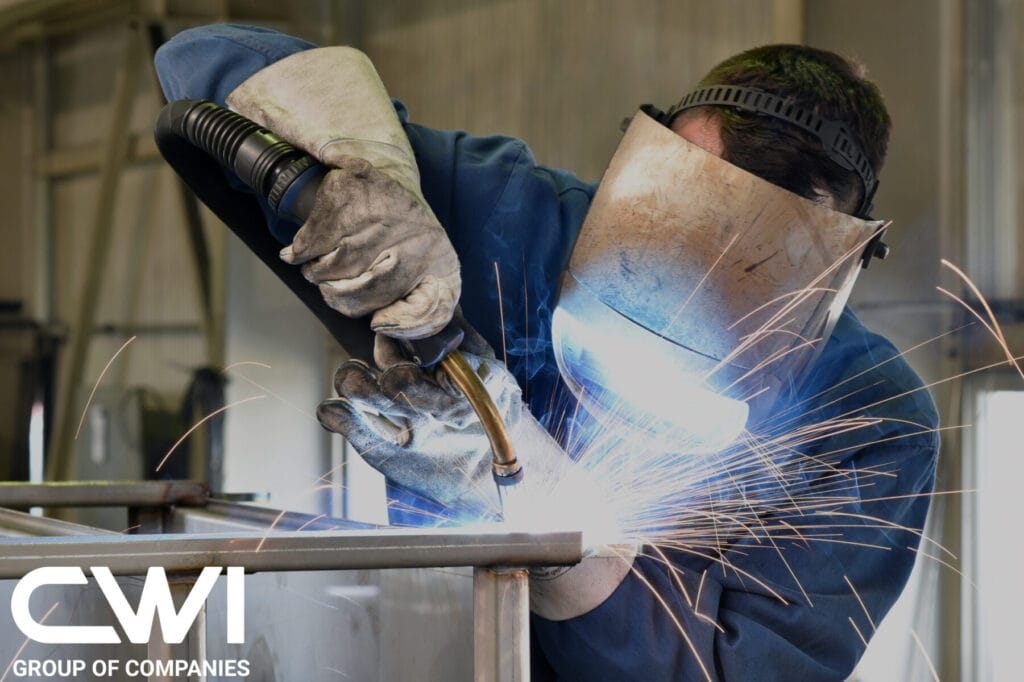
To achieve flawless stainless steel TIG welds, practice is necessary. However, using the correct tools and having essential knowledge can help you succeed.
Start by selecting the correct welding rod for your material thickness and composition. Once you have the right supplies for the job, you can begin perfecting your application by managing your speed and purging the backside of your welds.
Let’s review these steps in more detail. Read 3 Tips for Getting the Perfect Stainless Steel TIG Welds below!
Choose the Right Filler Wire:
Choosing the wrong type of filler metal in TIG welding can cause cracking, void fraction, weakness, and breaking. Rod size and material should be considered in your selection, matching your base metal to your filler metal. Central Wire manufactures 24 alloys of Gen4 stainless steel welding wire that are suitable for TIG applications.
Here are two guidelines:
Larger welding rod needs more heat to melt. So, use a thinner filler metal than your base metal. Your goal is to use a wire thin enough to apply a smooth bead that combats lumps but still be thick enough to build up and control.
The filler wire and base metal should also be mechanically and chemically compatible to ensure strong welds and longevity. Base metals usually have a specific use with one filler metal, but there can be some variation in your choice.
316L base metal, for example, will call for 316L filler metal, while 304 base metal will call for 308L filler metal. In short, the strength of your welds must meet or exceed the strength of your base metal to prevent cracking, snapping, or separation due to poor bonding. Choosing a compatible filler helps safeguard that durability.
Manage the Puddle:
Stainless steel is not very thermally conductive which means it builds heat very quickly. If not controlled properly, that excess heat may ruin the appearance of your welds or warp your project. To prevent the area from getting too hot, move quickly after making a puddle and only stay for about one second.
To maintain good welds, set your welder to 1 amp for every 0.001 inch of material thickness. It might be difficult, but it’s important for controlling weld quality. You can also improve the accuracy of your application by practicing dry runs to become comfortable with the movement.
Back Purge Your Project:
The back of your project is as important as the front, so back purging is necessary for stainless steel welding. There are different ways to do this, like buying kits or making your own setup with foil. The main objective is to establish a protective environment for the backside of your project. This involves blocking oxygen and providing argon gas to the welds underneath.
Molten stainless steel reacting with oxygen can cause oxidation or sugaring on the underside of your project. This can result in a rough surface. This unsightly surface is hazardous to the structural integrity of the weld, leaving it susceptible to cracking and rust. Back purging with a constant inert blanket of argon will combat these issues and help form smoother, stronger joints.
Now you know 3 Tips for Getting the Perfect Stainless Steel TIG Welds, do you need help choosing the right stainless steel welding wire? Check out our website’s welding wire page or get our Gen4 Welding Wire Catalog.

Now you know 3 Tips for Getting the Perfect Stainless Steel TIG Welds, do you need help choosing the right stainless steel welding wire? Check out our website’s welding wire page or get our Gen4 Welding Wire Catalog.
